Identification and validation of PCSK9 as a prognostic and immune-related influencing factor in tumorigenesis: a pan-cancer analysis
- PMID: 37860186
- PMCID: PMC10584329
- DOI: 10.3389/fonc.2023.1134063
Identification and validation of PCSK9 as a prognostic and immune-related influencing factor in tumorigenesis: a pan-cancer analysis
Abstract
Introduction: Proprotein convertase subtilisin/kexin-9 (PCSK9) has been primarily studied in the cardiovascular field however, its role in cancer pathophysiology remains incompletely defined. Recently, a pivotal role for PCSK9 in cancer immunotherapy was proposed based on the finding that PCSK9 inhibition was associated with enhancing the antigen presentation efficacy of target programmed cell death-1 (PD-1). Herein, we provide results of a comprehensive pan-cancer analysis of PCSK9 that assessed its prognostic and immunological functions in cancer.
Methods: Using a variety of available online cancer-related databases including TIMER, cBioPortal, and GEPIA, we identified the abnormal expression of PCSK9 and its potential clinical associations in diverse cancer types including liver, brain and lung. We also validated its role in progression-free survival (PFS) and immune infiltration in neuroblastoma.
Results: Overall, the pan-cancer survival analysis revealed an association between dysregulated PCSK9 and poor clinical outcomes in various cancer types. Specifically, PCSK9 was extensively genetically altered across most cancer types and was consistently found in different tumor types and substages when compared with adjacent normal tissues. Thus, aberrant DNA methylation may be responsible for PCSK9 expression in many cancer types. Focusing on liver hepatocellular carcinoma (LIHC), we found that PCSK9 expression correlated with clinicopathological characteristics following stratified prognostic analyses. PCSK9 expression was significantly associated with immune infiltrate since specific markers of CD8+ T cells, macrophage polarization, and exhausted T cells exhibited different PCSK9-related immune infiltration patterns in LIHC and lung squamous cell carcinoma. In addition, PCSK9 was connected with resistance of drugs such as erlotinib and docetaxel. Finally, we validated PCSK9 expression in clinical neuroblastoma samples and concluded that PCSK9 appeared to correlate with a poor PFS and natural killer cell infiltration in neuroblastoma patients.
Conclusion: PCSK9 could serve as a robust prognostic pan-cancer biomarker given its correlation with immune infiltrates in different cancer types, thus potentially highlighting a new direction for targeted clinical therapy of cancers.
Keywords: immune infiltrate; pan-cancer; pcsk9; prognosis; tumorigenesis.
Copyright © 2023 Sun, Zhu, Shen, Huang, Li, Li, Ma and Wang.
Conflict of interest statement
The authors declare that the research was conducted in the absence of any commercial or financial relationships that could be construed as a potential conflict of interest
Figures

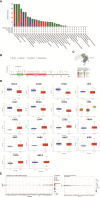
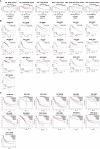
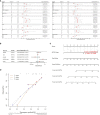

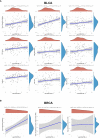
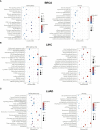
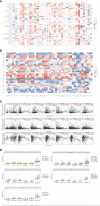
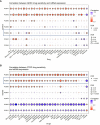
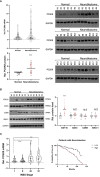
Similar articles
-
Prognostic value and immunological role of BAIAP2L2 in liver hepatocellular carcinoma: A pan-cancer analysis.Front Surg. 2022 Oct 21;9:985034. doi: 10.3389/fsurg.2022.985034. eCollection 2022. Front Surg. 2022. PMID: 36338652 Free PMC article.
-
BRCA1-Associated Protein Is a Potential Prognostic Biomarker and Is Correlated With Immune Infiltration in Liver Hepatocellular Carcinoma: A Pan-Cancer Analysis.Front Mol Biosci. 2020 Nov 2;7:573619. doi: 10.3389/fmolb.2020.573619. eCollection 2020. Front Mol Biosci. 2020. PMID: 33240929 Free PMC article.
-
Pan-Cancer Analysis of PARP1 Alterations as Biomarkers in the Prediction of Immunotherapeutic Effects and the Association of Its Expression Levels and Immunotherapy Signatures.Front Immunol. 2021 Aug 31;12:721030. doi: 10.3389/fimmu.2021.721030. eCollection 2021. Front Immunol. 2021. PMID: 34531868 Free PMC article.
-
Pan-cancer analysis of the prognostic and immunological role of GJB2: a potential target for survival and immunotherapy.Front Oncol. 2023 Jun 23;13:1110207. doi: 10.3389/fonc.2023.1110207. eCollection 2023. Front Oncol. 2023. PMID: 37427102 Free PMC article. Review.
-
Antitumor activity and molecular mechanism of proprotein convertase subtilisin/kexin type 9 (PCSK9) inhibition.Naunyn Schmiedebergs Arch Pharmacol. 2022 Jun;395(6):643-658. doi: 10.1007/s00210-022-02200-y. Epub 2022 Mar 21. Naunyn Schmiedebergs Arch Pharmacol. 2022. PMID: 35307759 Review.
Cited by
-
Prognostic Value of PCSK9 Levels in Premenopausal Women at Risk of Breast Cancer-Evidence from a 17-Year Follow-Up Study.Cancers (Basel). 2024 Apr 4;16(7):1411. doi: 10.3390/cancers16071411. Cancers (Basel). 2024. PMID: 38611089 Free PMC article.
-
PCSK9 expression and cancer survival: a prognostic biomarker at the intersection of oncology and geroscience.Geroscience. 2025 Jun 27. doi: 10.1007/s11357-025-01733-3. Online ahead of print. Geroscience. 2025. PMID: 40576911
-
PCSK9 Manipulates Lipid Metabolism and the Immune Microenvironment in Cancer.Onco Targets Ther. 2025 Mar 27;18:411-427. doi: 10.2147/OTT.S504637. eCollection 2025. Onco Targets Ther. 2025. PMID: 40166624 Free PMC article. Review.
-
Ubiquitination in lipid metabolism reprogramming: implications for pediatric solid tumors.Front Immunol. 2025 Apr 30;16:1554311. doi: 10.3389/fimmu.2025.1554311. eCollection 2025. Front Immunol. 2025. PMID: 40370434 Free PMC article. Review.
-
Drug development advances in human genetics-based targets.MedComm (2020). 2024 Feb 9;5(2):e481. doi: 10.1002/mco2.481. eCollection 2024 Feb. MedComm (2020). 2024. PMID: 38344397 Free PMC article. Review.
References
LinkOut - more resources
Full Text Sources
Research Materials
Miscellaneous

